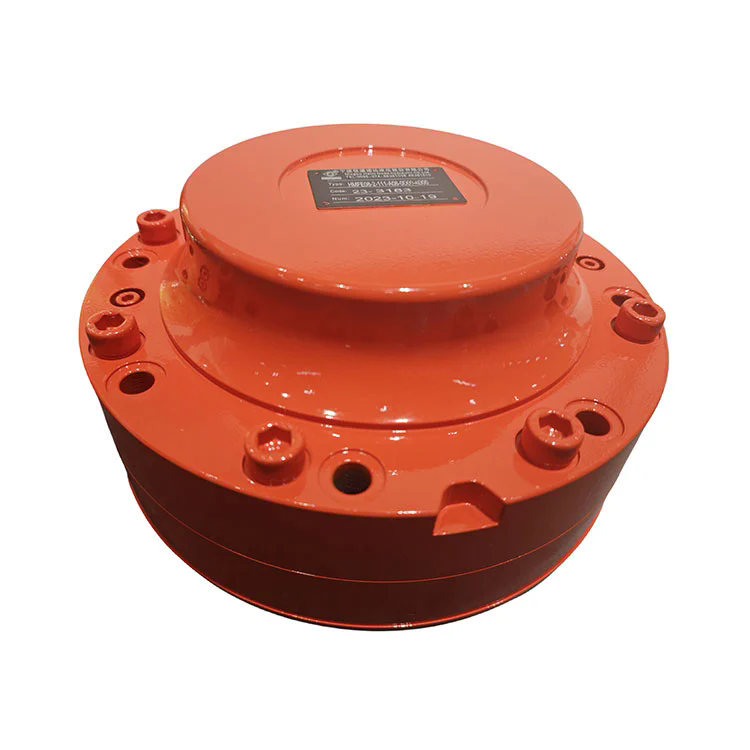The Power Behind Hydraulic Motors: How They Drive Efficiency in Industry
2025-02-06
Hydraulic motors are often considered the unsung heroes of modern industrial machinery. Whether you're working in construction, agriculture, manufacturing, or any number of heavy-duty sectors, hydraulic motors play a critical role in converting hydraulic energy into mechanical energy. From powering large equipment to enhancing the precision of machines, hydraulic motors provide a level of efficiency and control that is hard to beat.
In this blog post, we’ll explore what hydraulic motors are, how they work, the different types available, and why they are so crucial for industries around the world.
What is a Hydraulic Motor?
A hydraulic motor is a mechanical actuator that converts hydraulic pressure and flow into rotational motion. Essentially, it uses the force created by pressurized hydraulic fluid to generate a rotating output. This output can be used to power a variety of machinery, from simple tools to complex systems.
Hydraulic motors are often used in applications where high torque and smooth, controlled motion are needed. They are part of a broader hydraulic system, which typically includes a pump to move fluid through the system, a valve to control the flow, and hoses or pipes to deliver the fluid to various components.
How Do Hydraulic Motors Work?
Hydraulic motors work on the principle of fluid dynamics, with the movement of hydraulic fluid driving the motor's internal components. When pressurized fluid enters the motor, it causes the internal mechanisms to rotate, which then drives the external load or machine.
The key components of a hydraulic motor include:
Rotor or Piston: This is the part of the motor that rotates when fluid enters. The rotor can be a gear, vane, or piston, depending on the motor design.
Casing: The housing that contains the rotor and controls the path of the fluid.
Fluid Inlet/Outlet: The ports through which hydraulic fluid enters and exits the motor.
The hydraulic fluid's pressure is what provides the torque to rotate the motor. By controlling the flow rate and pressure of the fluid, you can adjust the speed and torque of the motor to match the needs of the application.
Types of Hydraulic Motors
There are several different types of hydraulic motors, each designed for specific applications based on factors like torque, speed, and precision. Here’s a look at the most common types:
1. Gear Motors
Gear motors are one of the simplest and most widely used types of hydraulic motors. They consist of two or more gears that mesh together, turning the motor’s output shaft. Gear motors are known for their durability and efficiency in high-torque applications but are typically limited to lower-speed operations.
External Gear Motors: These motors use two gears, with one gear driving the other. They are often used in systems requiring medium to high torque and lower speeds.
Internal Gear Motors: In these motors, one gear is located inside the other. They are more compact and can operate more smoothly, making them ideal for applications where noise and vibration are concerns.
2. Vane Motors
Vane motors use a series of vanes that slide in and out of slots within a rotor. These motors are known for their smooth operation and relatively high efficiency. Vane motors are often used in systems where precise control and moderate speed are required.
Vane motors are ideal for applications like steering systems, conveyor belts, and pump drives. They provide good performance under both low and moderate loads.
3. Piston Motors
Piston motors are the most efficient hydraulic motors and can operate under high pressures. They are designed with multiple pistons that move in a circular pattern within a cylinder, creating a rotating output. These motors are capable of delivering high torque at a relatively low speed.
There are two main types of piston motors:
Axial Piston Motors: In axial piston motors, the pistons are arranged in a parallel orientation to the shaft, providing high torque and precise speed control.
Radial Piston Motors: In radial piston motors, the pistons are arranged in a radial pattern around the central shaft. These motors are ideal for applications requiring very high torque at low speeds.
4. Swashplate Motors
Swashplate motors are a type of axial piston motor that allows for adjustable displacement. By varying the angle of the swashplate, the displacement (and thus the power output) can be changed, making them ideal for variable speed applications.
These motors are widely used in applications such as construction machinery, winches, and agricultural equipment, where the motor needs to adapt to changing demands.
Advantages of Hydraulic Motors
Hydraulic motors offer several advantages over other types of motors, which is why they are commonly used in heavy-duty and industrial applications. Some of the key benefits include:
1. High Torque Output
One of the main advantages of hydraulic motors is their ability to produce very high torque at low speeds. This makes them ideal for powering large machinery, such as excavators, cranes, and agricultural equipment, where heavy lifting is required.
2. Compact and Powerful
Hydraulic motors are compact for the amount of power they can generate. This makes them ideal for applications where space is limited but high power is necessary.
3. Efficient Energy Transfer
Unlike electric motors that require heavy batteries or complex wiring, hydraulic motors rely on pressurized fluid, which can be easily transmitted over long distances without significant energy loss. This is especially useful in large-scale industrial settings.
4. Smooth and Continuous Operation
Hydraulic motors can provide smooth and continuous operation, making them suitable for applications that require steady, uninterrupted movement. Their ability to produce consistent output makes them essential in areas like robotics and manufacturing lines.
5. Versatile Control
The speed and torque of hydraulic motors can be easily controlled by adjusting the pressure and flow of the hydraulic fluid. This allows for precise operation in a wide variety of settings.
Applications of Hydraulic Motors
Hydraulic motors are used in a wide range of industries, and their versatility allows them to power everything from small tools to large machines. Some of the common applications include:
Construction Equipment: Hydraulic motors are used in machines like excavators, bulldozers, and backhoes, where they provide the power for digging, lifting, and pushing heavy loads.
Agriculture: Tractors, combine harvesters, and other farm machinery often rely on hydraulic motors to power implements like plows, seeders, and harvesters.
Manufacturing: In industrial plants, hydraulic motors power conveyor belts, lifting systems, and other equipment that requires high torque and low-speed rotation.
Marine Industry: Hydraulic motors are also commonly found in winches, steering systems, and other marine applications.
Automotive: Hydraulic motors are used in automotive systems like power steering and certain braking mechanisms.
Conclusion
Hydraulic motors are indispensable components in many industries, offering high torque, compact size, and efficient energy transfer. Their versatility makes them ideal for everything from heavy-duty construction machinery to precise industrial applications. Whether you're lifting, turning, or powering large machinery, hydraulic motors provide the force and control necessary to keep operations running smoothly. As industries continue to evolve and demand more from their equipment, the importance of hydraulic motors will only grow, cementing their place as a cornerstone of modern mechanical systems.



